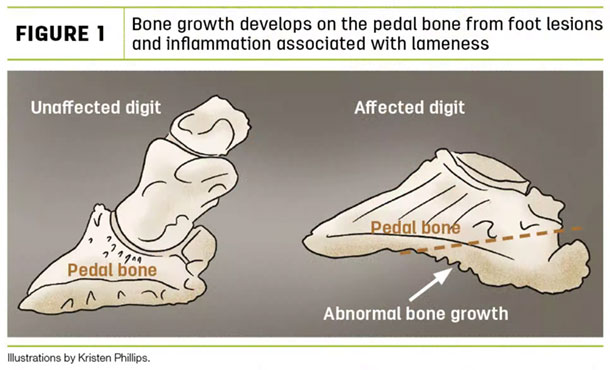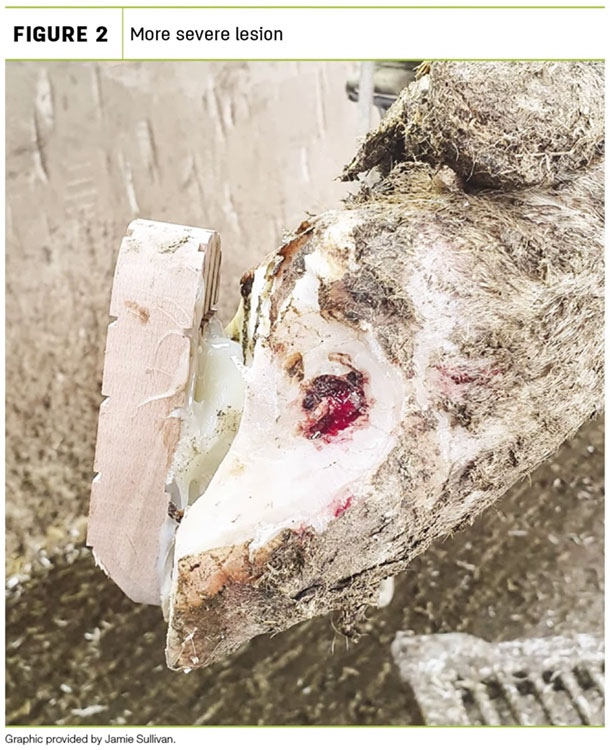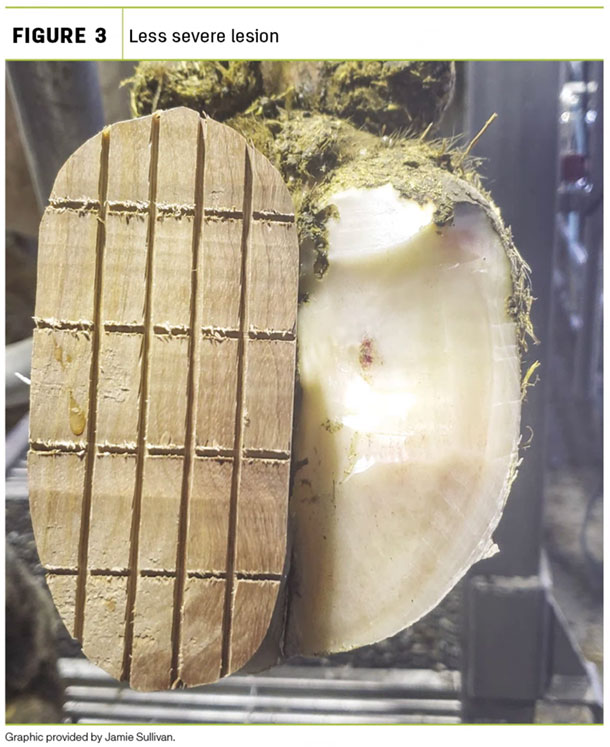Zero lameness is not about never having a cow go lame. We know if there are cows, there will be a time when one of them will become lame. But how we respond to that event will determine whether that cow will become part of the chronic lameness problem our industry is experiencing.
We have all heard the industry statistics on lameness, anywhere from 25% to as high as 40%, depending on the study referenced. Or the statistic stating some individual herds have as high as 80% lameness. Inadvertently, through various research projects, we have discovered much of that lameness is from chronic cows.
When looking to enroll cows into research projects that never had a lameness event recorded, it was found anywhere between 50% and 90% of lameness in various herds were from cows that had at least one previous lame event in their history.
This can be for a variety of reasons:
1. The initial lame event was not treated with a proper or complete therapeutic trim.
2. Lameness was not detected soon enough to prevent permanent damage to the internal structures of the foot. Figure 1 shows the bone growth that develops on the pedal bone from foot lesions and inflammation associated with lameness.

3. We may not have done enough in preventing the first lame event to begin with.
We are going to focus on the latter two reasons as the major source to the chronic lameness issues.
If only one-tenth of our industry’s lameness problem is from new lame cases, how do we prevent either the lameness happening in the first place or at least prevent it from becoming a reoccurring, chronic lameness event? We can narrow this down to three focus areas:
- Transition management
- Facility design
- Preventive hoof trimming
We hear a lot about transition management these days, and it really is the make or break point for the cow’s lactation and farm profitability. If the cow has a smooth and well-managed transition period, she will likely go unnoticed the rest of the lactation, as she will be trouble-free. These cows will rapidly reach a high peak production level without any mastitis, then go on to breed back quickly and repeat the cycle all over again. Many resources and research articles on transition management are available, or review your program with your nutritionist and veterinarian.
When it comes to facility flaws causing lameness, the type of lesion causing the most lameness can point you in the right direction:
- If white-line lesions are your main source, then we can direct our attention to surface traction, concrete condition, protruding lag bolts and cattle handling.
- If you are dealing with sole ulcers, direct your attention to stall comfort, time management or heat abatement, all in an effort to increase lying times.
- For more infectious lesions like digital dermatitis (warts) or foot rot, we can look at hygiene, footbath protocols and design. Are we managing this prevention in the dry cow pens and heifer pens, as well as the lactating herd?
Finally, are we aggressive enough in our routine hoof trimming prevention protocols, and are we actively detecting cows as soon as they become lame and treating them immediately? Are we applying blocks soon enough? Are we including NSAIDS in our treatment protocols?
All of these steps help to prevent that permanent structural damage that leads to our chronical lame cows. Figures 2 and 3 are pictures of two different-severity lesions.

I would argue that if there was only one block left to apply, it should be put on the foot shown in Figure 3.

Put the focus on doing everything at this severity to prevent this cow from becoming part of our chronic lameness problem.
A study done in 2014 showed that when cows were treated immediately on their first lame event with a therapeutic trim, block and NSAIDS, more than half (56%) made a full recovery. However, when they repeated the study two years later with chronic lame cows and the same treatment protocol, only 16% made a full recovery. I have seen even better results than 56% in individual herds, but the study clearly shows early detection and treatment will drastically reduce our number of chronic lame cows.
That study prompted me to start being very proactive in the cows I blocked with a couple of my progressive herds. I started applying what I call “preventative blocks” on my early lactation maintenance trims (especially first lactation). So if they were on the trim list for their 80 to 100 days in milk (DIM) trim and not noticeably lame, but had a severe hemorrhage, they got a slightly thinner block applied for four weeks. Over time, there were less severe lesions in later lactation and subsequent lactations. There became fewer repeated lame events in these herds.
Hopefully, our industry can provide some grant money for researchers to really investigate these proactive interventions in order to combine research and on-farm data. This information can then be used to develop and validate the best practices to really reduce the amount of chronic and overall lameness in our industry, therefore improving animal well-being, farm profitability and consumer trust in dairy products.
References omitted but are available upon request. Click here to email an editor.






